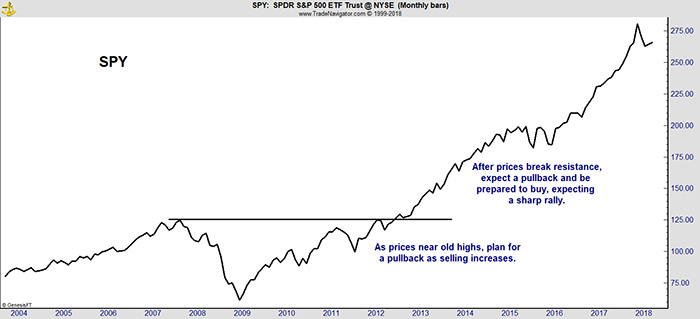His fangs gleamed as he pulled his lips back … and hissed.
Gambit, my two-year-old cat, was losing it. We had a furry new addition to the household: A tiny, three-month tabby my friend got me for my birthday.
The bundle of fur and bones tumbled and skidded across my living room like he’d just returned from a night of endless tequila shots.
And every time he tackled a speck of dust, Gambit’s fangs came out. He hissed. He growled. He even turned that gleaming maw at me a few times.
Instead of getting worried, though, I perched on my sofa, fascinated.
Cats have deep-rooted territorial instincts — a knee-jerk, hardwired bias against new cats. I’ve spent quite a few hours Googling cat psychology. And being armed with this information means I don’t panic at hisses.
In fact, I know exactly how to deal with the situation.
And that brings me to today’s topic: If you understand your knee-jerk reactions, you’re primed to protect your wealth from yourself — and stay ahead of the curve.
After all, I think we all can be our own worst enemies. That’s why, when I asked if you wanted to hear about our trading biases in my technical-analysis article last week, I got some great feedback:
Herm R. wrote: “Yes please write about it.
Richy E. wrote: “I would like to read about average investors’ unconscious biases.”
George B. wrote: “I am intrigued by the information you provided in regards to technical analysis. It provided me with much insight as I am a novice investor. Any further information will not be wasted.”
Karnam S. wrote: “Jessica, your articles are simple but very effective and smart! Please continue to educate us more on technical analysis. I actually look forward for your articles every Saturday along with Paul’s, Michael’s and Chad’s. You guys are awesome!”
Tom S. wrote: “Good short summary. Very good. I’ve been trading a while (rules-based discretionary technical trader) — and if you asked me, I would have struggled to think of, and identify, all those good points. They also are good, basic beliefs that Van Tharp often refers to: You trade your beliefs about the market. So yes, anything you can do to write about the psychology of trading or technical analysis will definitely help everyone.”
Thanks to everyone who took the time to reach out! I really appreciate the feedback.
With that in mind, let’s now cover some basic biases we all share. That way, we can understand our reactions, stay calm (unlike my cat) — and help our wealth grow.
3 Reasons You’re Getting in Your Own Way
- Sunk Cost Bias — It’s the term for continuing with an activity that doesn’t meet expectations because of how much time or money you spent on it already.
Think about when you go to the movies. Have you hated a movie 20 minutes in but decided to stay because you spent $10 on it? It might sound understandable. But think about it: You’ve not only wasted $10 now, but two hours of your time — and whatever time you spent criticizing the movie later. And it’s all for something not worth watching!
The same happens with our trades. We continue with a losing or sideways trend because of how much time or money we spent on it. We stay in and hope to just breakeven — which actually accounts for resistance levels on charts.
In fact, you can use this knowledge to your advantage.
Look at any price chart. Take this SPDR S&P 500 ETF (NYSE: SPY) chart systems expert Michael Carr created as an example:

By understanding investor psychology, we know that as prices near old highs, nervous investors will take gains to break even. This is the resistance line! And after a breakout, there will likely be a rally as investors get excited. But you can expect a quick pullback first from residual profit-taking — which creates a great buying opportunity.
- Anchoring bias — Anchoring is the tendency to put more value on the first piece of information received when making a decision.
Many investors anchor their opinion on a stock to the price they paid. Some value a stock based on their original price target. That means they will sell or buy more shares based on a price that is important to just them — and not the overall market.
For example, they may hold a stock based on their biased valuations rather than the changing fundamentals. In fact, they might overtly dismiss new information that runs counter to their original opinion.
So remember, the price you paid for an investment is largely irrelevant to the current market value. Don’t let your anchors sway you.
Here’s a tip for helping with that: Evaluate each trade based on the current chart and indicators. This is how you get over most biases actually. Simply pay attention to the current trend and be open to new information.
- Endowment effect — This is the hypothesis that we assign greater value to assets we own — purely because we own them. So we may stick with a stock that’s unprofitable or stagnant, rather than jump into a better opportunity.
People who inherit shares of stock from deceased relatives illustrate this by refusing to sell those shares — even if they don’t fit with their risk tolerance or investment goals. Remember this one because it can negatively impact your portfolio diversification.
This also speaks to the “status quo effect,” which says investors prefer that things stay the same. Most investors actually prefer doing nothing. They will stick with something that’s familiar and comfortable to them — no matter if new information tells them to abandon ship.
So don’t overvalue your investments! Continuously reassess your holdings, and ask yourself two questions: Why would I buy this today? And are there better options?
I think that covers enough for now, but remember: These are just three investor biases. I learned a few more during Michael Carr’s technical-analysis class (you can learn more about his analysis techniques here).
So if you found this information helpful, and you’d like me to keep writing about it, just write me a quick note here or leave a comment on the website.
After all, this is how we make sure we completely understand our emotional reactions — and keep them from taking control.
Hey, it even works with my cats. I understood how to tackle Gambit’s biases, and now he’s even grooming the little kitten. In the end, we all win.
Catch you next week.
Regards,

Jessica Cohn-Kleinberg
Managing Editor, Banyan Hill Publishing








